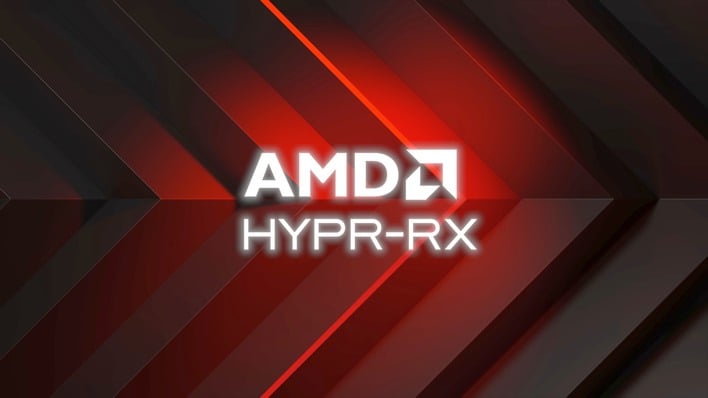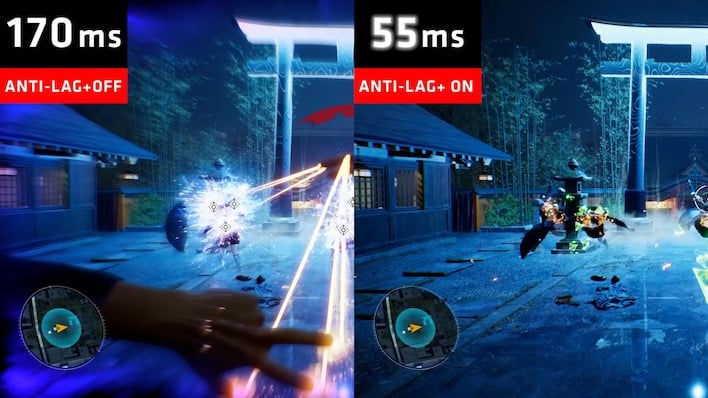AMD's Latest Radeon GPU Driver Adds Latency-Busting Anti-Lag+ And HYPR-RX Support

The big news is HYPR-RX. Despite the marketing name, this really isn't a single feature on its own but rather refers to a toggle in the driver panel that serves to activate three features at once: Radeon Super Resolution, Radeon Boost, and Radeon Anti-Lag, possibly including the Anti-Lag+ changes on supported hardware in applicable games.
If you don't know what any of this stuff is, we can explain in brief. Radeon Super Resolution is a driver-level resolution scaling toggle. It's almost exactly the same as simple GPU scaling, except it uses FidelityFX Super Resolution to perform the upscaling. It does look better than a simple bilinear upscale, but it's still the original version of FSR, so it doesn't look nearly as good as FSR 2—to say nothing of competitor upscalers.
Meanwhile, Radeon Boost is an AMD driver feature that does dynamic resolution scaling based on user input. Essentially, the driver drops the game's render resolution when you're whipping the mouse around to improve framerate and reduce input latency. The idea is that you probably won't notice the lowered resolution when you're moving the viewport around, and you probably won't notice a relatively-lower framerate when you aren't, in theory giving you the best of both worlds.
Finally, Radeon Anti-Lag is a driver feature that, yes, reduces input lag in games. NVIDIA has a similar technology known as "Reflex", and they debuted around the same time; this isn't a new feature for AMD. It works by preventing the GPU from running too far ahead of the CPU and piling up frames waiting to be displayed. It can slightly reduce your average framerate, but both framerate stability and input lag should improve.
With this driver, AMD is also introducing a new version of Anti-Lag known simply as Anti-Lag+. The difference is that this one also manages the work the CPU is doing to make sure it doesn't overrun the GPU. The company claims that Anti-Lag+ can give as much as a 120-ms reduction in input lag (in Ghostwire Tokyo), but admits that results in most titles will be more restrained. Anti-Lag+ requires a RDNA 3 GPU, at least for now.
So what does HYPR-RX do, exactly? Well, when you enable it, it toggles on Radeon Super Resolution, Radeon Boost, and Radeon Anti-Lag(+). The "catch" is that Radeon Boost doesn't work in every game, and neither does Anti-Lag+. In games that aren't supported by those technologies, you won't get the benefit of them. Likewise, to see gains from Radeon Super Resolution, you'll have to manually lower the resolution of your game.
Right now, HYPR-RX is only available on RDNA 3 graphics cards. That means the Radeon RX 7000 series GPUs. We've asked AMD if the tech will be coming to RDNA 2 and older GPUs anytime soon, but haven't received a response. We'll update this post when we do.



